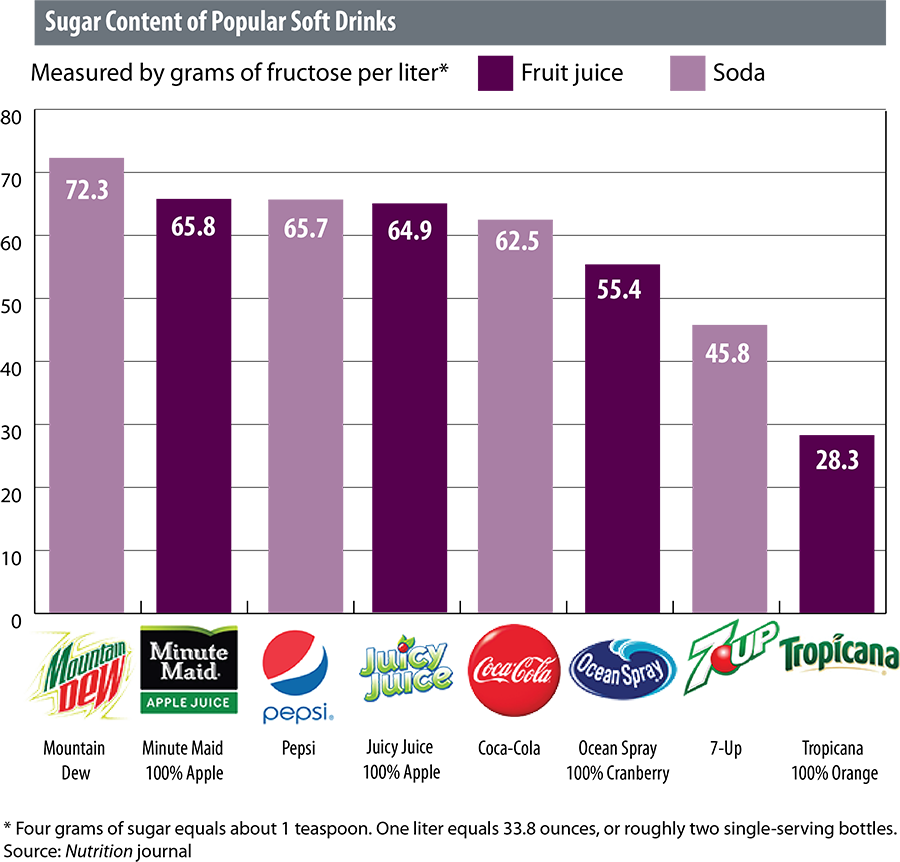It’s no secret that fruit consumption matters for children’s health and nutrition. And at first glance, data from the latest Colorado Child Health Survey seem to be positive, with about 86 percent of Colorado children between the ages of one and 14 consuming fruit at least once a day.
But that statistic camouflages a danger to children’s health: sugar, in the form of fruit juice.
Some of the Colorado children consuming fruit at least once a day are reaching that mark by drinking fruit juice. When juice is excluded, the percentage of Colorado children consuming fruit at least once a day drops by 13 percentage points to 73 percent.
When fruit juice is counted, children consume fruit a median two times a day. Without fruit juice, median fruit consumption drops to once a day.
About one quarter of a child’s plate should be reserved for fruit, according to the USDA’s nutrition guide, MyPlate, which counts 100% fruit juice as a fruit.
But counting fruit juice as fruit consumption may be contributing to an incomplete story around what is affecting childhood health in Colorado.
Some of the kids who drink fruit juice are drinking a lot of it. The same survey shows nearly one in 10 Colorado children between the ages of one and 14 drank two to three fruit juices a day in 2013. That’s a lot of sugar.
Take Minute Maid 100% Apple Juice, for example. It has 65.8 grams of fructose per liter (33.8 ounces), which is more than Pepsi, Coca-Cola and other popular sodas, according to a study published in January in the journal Nutrition.
The problem with fruit juices – even 100 percent juice varieties – is that in addition to the hidden sugar, they lack the fiber that whole fruits contain. Public health experts suggest fruit juice consumption may cause more harm than good, contributing to health risks such as childhood obesity, diabetes and cavities.
Fruit juice consumption and whole fruit consumption are both important to track, but combining the two as one measure may muddle the message about the benefits of fruit and the dangers of sugar.
Note: This is the first in a two-part Insight series on sugar-sweetened beverages.

